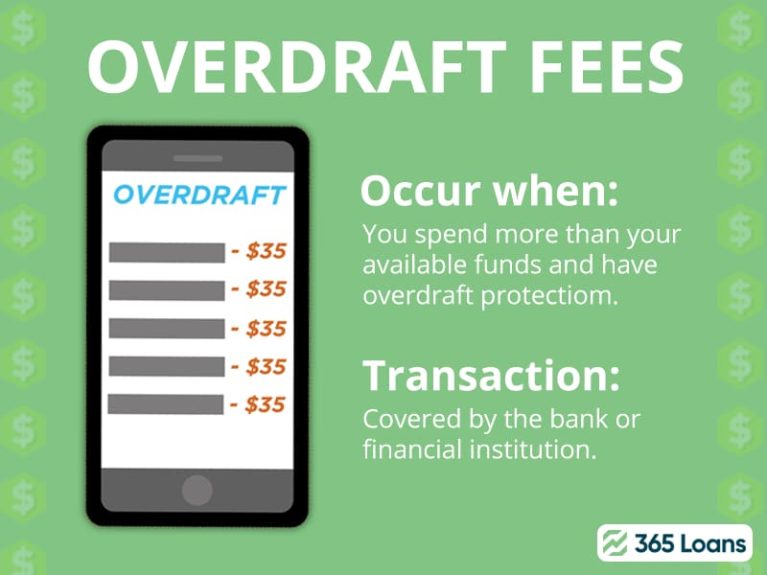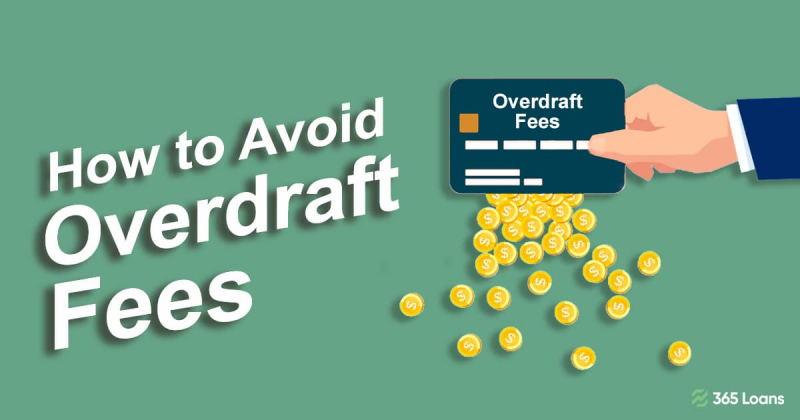Overdrafts work as a cover to your banking account in case your balance reaches negative. It is like an additional loan facility without the loan terms, such as collateral. The bank gets to decide whether to allow an overdraft facility and to what extent.
Almost every bank allows its customers with a checking account with an overdraft facility. The problem is the recurring overdraft fee you get charged for using the facility. However, there are specific steps that you can take to avoid these fees.
Before analyzing how you can avoid overdraft fees, take a minute look at how overdrafts work and how banks charge the fees in the first place.
What exactly is an overdraft fee?

Overdrafts are agreed-upon loan amounts the bank offers its customers should their account reach below zero. If you avail of the overdraft facility, your ATM withdrawal, checks presented to the bank, and online funds transfer will not get rejected up to an established limit.
Your overdraft fees are usually per transaction-based. However, depending on the overdraft coverage, the bank may charge an average fee for all overdraft transactions. You can opt to include all debit transactions in the overdraft coverage like ATM, check presented, and online funds transfer. However, merchant account holders frequently opt for only check inclusion as it directly affects their supplier relations.
How to avoid overdraft fees?
There are tried and tested steps that you can take to avoid all overdraft fees or reduce them.
- Quit the overdraft coverage
That is an obvious list starter; you can opt out of the overdraft facility anytime.
It becomes a causal habit for some users to inevitably avail of whatever is available. For example, if the bank allows an overdraft of $1,000, you might use it all before your next paycheck arrives.
- Change the overdraft coverage partially
You can choose what to include in the overdraft coverage with the bank. If necessary, try to keep it to the check presentations only. Adding ATM and online funds transfers may seem convenient, but they often add up the bulk of overdraft fees.
- Compare and change your bank
While most bank facilities come at standard rates, specific fees vary by bank. Therefore, comparing different bank fee structures for overdraft facilities can be a good starting point.
Certain banks set an overdraft fee per daily transaction and an upper limit for overdraft transactions. These fees per transaction and daily limit can prove a substantial difference if you are a regular culprit of overdraft fees.
- Set account transaction alerts
An easier option than you think. Bank transaction alerts have become routine and do not come with additional charges. Mobile banking apps are being used just like other social media apps.
Sign-up for your email transaction alerts or install and activate your mobile banking app. You can develop the habit of avoiding overdraft fees if you know your next transaction will cost you extra.
- Link your other accounts
You may open more than one type of bank account. For example, you may link other digital accounts if you have an overdraft facility approved for one account.
Linking an online bank account will not automatically activate your overdraft facility for another account, but it can safeguard you from a negative balance. A connected account creates a cushion of safety for you.

- Look for alternative options
If your account balance remains consistently below zero, and you are paying recurring overdraft fees, you should consider alternatives. An easier option to consider nowadays is using a pre-paid debit card. These cards come with reloadable funds options without any extra fees or charges from the banks, making them handy for online transactions.
You may also consider a quick loan, but you should be extremely careful about repaying those.
You may also want to check out: How to distinguish Predatory Lending?
Other alternatives can include a temporary loan facility like a revolving credit facility RCF or an extension in the credit card limit.
- Recharge your account quickly
Well, if you have used an overdraft facility and are willing to pay fees for it, this may sound like an odd option. But it may be an effective option to avoid any recurring fees.
Most overdraft fees are per transaction rather than a percentage of the amount. Therefore, even if you make small transactions repeatedly, you will get charged by the bank. Refilling your bank deposit level may help you avoid these recurring fees.







